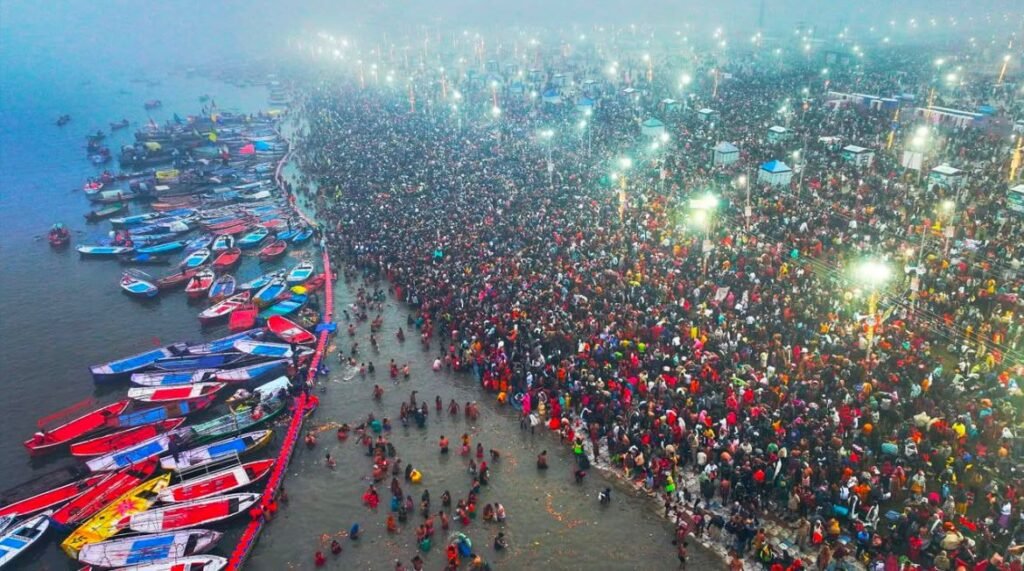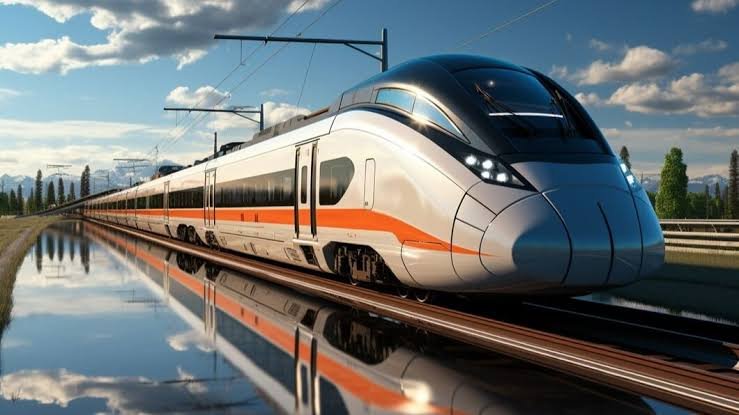With doubled tracks, the Varanasi-Prayagraj railway corridor now has improved connectivity, allowing trains to travel at 130 km/h and cutting travel times by up to an hour.
Overview
The infrastructure of Indian Railways has been continuously improved to offer quicker, safer, and more effective travel experiences. The Varanasi-Prayagraj railway route has reached a major milestone. The doubling of tracks under the control of the Northern Railway and North Eastern Railway (NER) zones has resulted in significant alterations to this sector. These events occur at a pivotal moment, particularly when Maha Kumbh 2025 preparations became more intense.

The main improvements, their effects on train operations, and the advantages for travelers between the two ancient cities are examined in this article.
Tracks Doubling: A Revolution
For many years, the Varanasi-Prayagraj railway corridor has been an essential conduit between two important Uttar Pradeshi cultural and commercial centers. However, the usage of single-track sections led to operating difficulties, traffic jams, and frequent delays. One innovation that solves these problems is the completion of track doubling on this section.
Important Milestones Reached
- Jhunsi-Prayagraj segment Doubling – In December 2024, the last 7 km of the Jhunsi-Prayagraj segment, which had not yet been doubled, was finished.
- On December 11, a major congestion ended when the Commissioner of Railway Safety (CRS) approved train movements.
- The Ugrasenpur-Janghai-Faizabad Section has been upgraded. The 35-kilometer section between Janghai and Ugrasenpur was the focus of the Northern Railway’s Lucknow division. In order to ensure smooth connectivity, the CRS authorized this segment for operation within 20 days after the Jhunsi-Prayagraj section.
Effect on Train Functions
Train operations between Varanasi and Prayagraj have significantly improved as a result of the doubled tracks:
- More Velocity
With trains being able to reach 130 km/h, travel times are greatly reduced. The trip between the two cities may be finished in just over an hour, saving passengers about sixty minutes. - Increased Security
By removing the requirement for trains to wait for crossings, double tracks lower the possibility of mishaps and delays. - Maha Kumbh 2025 Capacity Increase
Indian Railways has been able to launch 154 special trains for Maha Kumbh thanks to the modifications. Millions of pilgrims are anticipated to visit Prayagraj, and this extra capacity guarantees more efficient transportation.

Advantages of Track Duplicating
Speed and safety are not the only advantages of doubling the Varanasi-Prayagraj rails. They also consist of:
- Timeliness
There is now a greater likelihood that trains will follow their timetables, guaranteeing on-time arrivals and departures. - Adaptability in Operations
The presence of double tracks guarantees continuous train service in the event of crises or unanticipated events. - Social and Economic Interconnectedness
Trade, tourism, and social connections between the two cities are all improved by improved rail connectivity.
Maha Kumbh preparations for 2025
Millions of pilgrims flock to Prayagraj for the Maha Kumbh, one of the biggest religious gatherings in the world. Indian Railways has taken every precaution to provide seamless travel throughout this important occasion.

- Special Trains – To handle the increase in passenger volume, 154 extra trains have been added.
There are plans to expand the number of trains for important occasions such as Mauni Amavasya. - Improved Passenger Facilities – Better station facilities, such as food courts, escalators, and waiting areas.
Train schedules are updated in real time to efficiently manage passenger flow. - Coordination Across Zones – To guarantee smooth operations, the Northern and NER zones have worked closely together.
Views from Railroad Authorities
The significance of the improvements was emphasized by Vineet Kumar Srivastava, DRM of the Banaras Division: * “Trails move from one stretch of rail tracks to another, acting as an electrical grid. Even during periods of high demand, smooth and continuous operations are guaranteed by the doubling of tracks.*
Railway officials emphasized the advantages for passengers and operating efficiency while expressing relief at the projects’ prompt completion.
Economic and Environmental Consequences
- Decreased Emissions of Carbon
Reduced emissions per passenger are a result of faster and more effective train operations. - Boost to Local Economies Improved train connectivity promotes trade and tourism, which helps small companies in Prayagraj, Varanasi, and the neighboring areas.

The focus that Indian Railways places on electrified rails is in line with the country’s sustainable development objectives.
Experiences of Passengers
Positive effects have already begun to be noticed by travelers. Frequent passenger Rekha Sharma shared: * “The trip used to take more than two hours in the past, and delays were usual. The experience is now dependable, quick, and seamless.*
Likewise, the shortened transit time and punctuality are valued by traders who depend on this route for the transportation of commodities.
Overcoming Obstacles
Reaching these milestones wasn’t without its difficulties:
- Acquisition and Approval of Land
The first obstacles were delays in administrative approvals and land purchase. - Zone-to-Zone Coordination
Careful preparation and implementation were needed to coordinate activities throughout the Northern and NER zones. - Resources and Funding
The timely completion of the projects depended on efficient resource allocation and budget management.
Plans for the Future
Indian Railways isn’t sitting back and enjoying its success. There are plans to improve the Varanasi-Prayagraj route even more:
To enable even quicker trains, the electrification infrastructure is being strengthened through the implementation of Electrification Upgrades.

- Semi-High-Speed Train Introduction
investigating the viability of using this route for semi-high-speed trains like Vande Bharat.
Using state-of-the-art signaling technology to increase operational efficiency and safety is known as “Advanced Signaling Systems.”
Final Thoughts
Uttar Pradesh’s rail transportation is entering a new age with the doubling of tracks on the Varanasi-Prayagraj corridor. Travelers can anticipate a top-notch experience thanks to speedier trains, increased safety, and better connectivity.
These improvements will be essential to providing millions of pilgrims with efficient and seamless transit as Maha Kumbh 2025 draws near. The joint initiatives of Indian Railways and municipal governments demonstrate how infrastructure development may revolutionize economic growth and social advancement.







